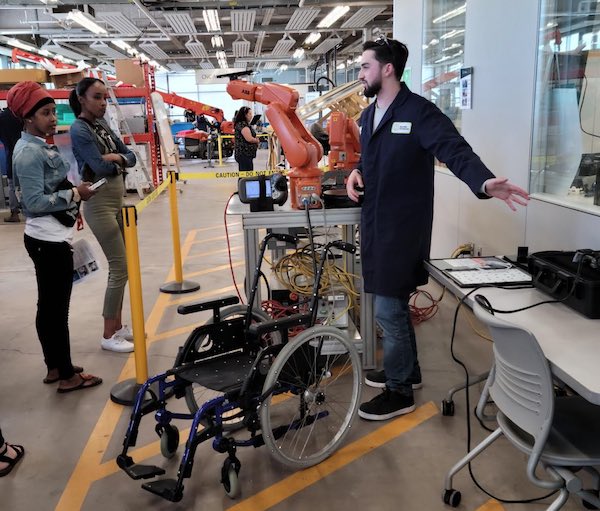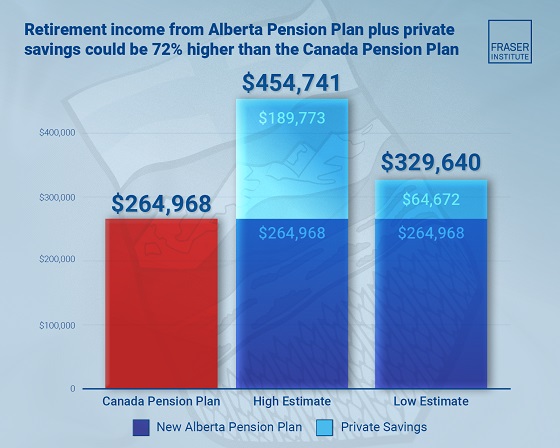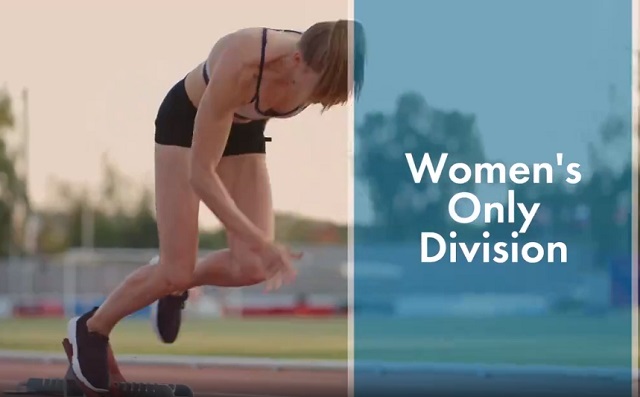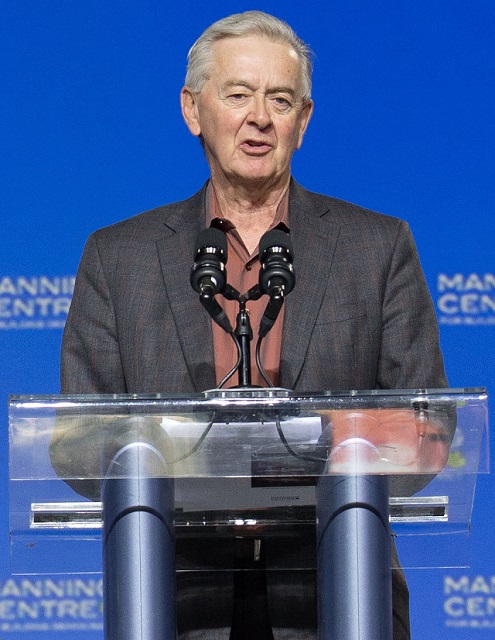Alberta
Financial boost will engage Red Deer Polytechnic with partners working on medical device innovations

Red Deer Polytechnic’s CIM-TAC receives national funding
Two years after being designated a Technology Access Centre through a grant from the Natural Sciences and Engineering Research Council (NSERC), Red Deer Polytechnic’s Centre for Innovation in Manufacturing (CIM-TAC) is celebrating new funding. The national funding – and the equipment it supports – were highlighted at the CIM-TAC Open House, hosted yesterday at the industrial research facility.
“The Open House provided an opportunity for stakeholders and community members to come to CIM-TAC and gain a better understanding of the first-class innovation and opportunities that are available here,” says Jim Brinkhurst, Interim President of Red Deer Polytechnic. “The prestigious grant funding that the CIM-TAC has received over recent years allows us to grow the knowledge, expertise and equipment available to support research and innovation – in central Alberta and beyond.”
NSERC announced in April that the CIM-TAC would receive $300,000 over two years in an Applied Research and Technology Partnership (ARTP) grant to promote the growth of innovations in health care assistive devices in Alberta. CIM-TAC’s business and industry clients will be able to accelerate commercialization of their devices through the addition of engineers and technologists with specialties in mechanics, mechatronics and robotics, as well as students in engineering, business, and health sciences to assist on projects.
“The TAC grant in 2020 allowed us to increase our capabilities to include design engineering and material experts,” says Dr. Tonya Wolfe, CIM-TAC Manager. “The additional staff we’ll be able to take on with the ARTP grant will give us an integrated team of specialists capable of accelerating new product development for our industry clients. Additionally, we will be able to provide a new focus area for central Alberta’s existing manufacturing base, many of whom have already expressed a desire to find areas for new opportunities as the traditional economy of our region changes.”
The majority of medical devices used in our healthcare system are imported. By encouraging the growth of innovations in health care assistive devices in the region, it will enable Alberta’s manufacturers to diversify into this market through the adoption and integration of digital manufacturing, which is key to meeting the changing realities of Alberta’s economy.
“With our enhanced capacity, CIM-TAC is able to provide Alberta’s assistive health care companies an integrated one-stop applied research shop to accelerate the commercialization of their homegrown innovations,” says Wolfe. “Our expertise includes design for manufacturing, validation, and manufacturing optimization – all intended to support SMEs at every stage of the innovation cycle as they focus on improving their manufactured products and processes.”
Darryl Short of Karma Medical Products (KARMED) gave a keynote address at the Open House event about his collaboration with the CIM-TAC in the development of a system for hand and upper extremity therapy. The product assists patients in gaining flexibility, strength, and functional independence. CIM-TAC worked with KARMED on prototyping and in the scale up stage.
“Through our recent funding and the opportunities it provides, Red Deer Polytechnic’s CIM-TAC is positioned to collaborate with innovators and industry to meet an important need across our province,” says Brinkhurst. “We look forward to working with our partners and stakeholders to achieve positive short-term and long-term goals that will benefit Albertans.

About the Centre for Innovation in Manufacturing (CIM-TAC):
While its Technology Access Centre designation was awarded in 2020, the CIM opened in 2009 as one of the key facilities of RDP’s Four Centres. Since then, they have collaborated with hundreds of small and medium sized businesses and entrepreneurs to create solutions to numerous real-world manufacturing challenges. In 2021, the CIM-TAC had more than 500 engagements with business and industry clients interested in applied research and advanced manufacturing. Out of these, 28 new products and processes were developed, and 41 existing products were improved.
Alberta
Median workers in Alberta could receive 72% more under Alberta Pension Plan compared to Canada Pension Plan

From the Fraser Institute
By Tegan Hill and Joel Emes
Moving from the CPP to a provincial pension plan would generate savings for Albertans in the form of lower contribution rates (which could be used to increase private retirement savings while receiving the same pension benefits as the CPP under the new provincial pension), finds a new study published today by the Fraser Institute, an independent, non-partisan Canadian public policy think-tank.
“Due to Alberta’s comparatively high rates of employment, higher average incomes, and younger population, Albertans would pay a lower contribution rate through a separate provincial pension plan while receiving the same benefits as under the CPP,” said Tegan Hill, director of Alberta policy at the Fraser Institute and co-author of Illustrating the Potential of an Alberta Pension Plan.
Assuming Albertans invested the savings from moving to a provincial pension plan into a private retirement account, and assuming a contribution rate of 5.85 per cent, workers earning the median income in Alberta ($53,061 in 2025) could accrue a stream of retirement payments totalling $454,741 (pre-tax)—a 71.6 per cent increase from their stream of CPP payments ($264,968).
Put differently, under the CPP, a median worker receives a total of $264,968 in retirement income over their life. If an Alberta worker saved the difference between what they pay now into the CPP and what they would pay into a new provincial plan, the income they would receive in retirement increases. If the contribution rate for the new provincial plan was 5.85 per cent—the lower of the available estimates—the increase in retirement income would total $189,773 (or an increase of 71.6 per cent).
If the contribution rate for a new Alberta pension plan was 8.21 per cent—the higher of the available estimates—a median Alberta worker would still receive an additional $64,672 in retirement income over their life, a marked increase of 24.4 per cent compared to the CPP alone.
Put differently, assuming a contribution rate of 8.21 per cent, Albertan workers earning the median income could accrue a stream of retirement payments totaling $329,640 (pre-tax) under a provincial pension plan—a 24.4 per cent increase from their stream of CPP payments.
“While the full costs and benefits of a provincial pension plan must be considered, its clear that Albertans could benefit from higher retirement payments under a provincial pension plan, compared to the CPP,” Hill said.
Illustrating the Potential of an Alberta Pension Plan
- Due to Alberta’s comparatively high rates of employment, higher average incomes, and younger population, Albertans would pay a lower contribution rate with a separate provincial pension plan, compared with the CPP, while receiving the same benefits as under the CPP.
- Put differently, moving from the CPP to a provincial pension plan would generate savings for Albertans, which could be used to increase private retirement income. This essay assesses the potential savings for Albertans of moving to a provincial pension plan. It also estimates an Albertan’s potential increase in total retirement income, if those savings were invested in a private account.
- Depending on the contribution rate used for an Alberta pension plan (APP), ranging from 5.85 to 8.2 percent, an individual earning the CPP’s yearly maximum pensionable earnings ($71,300 in 2025), would accrue a stream of retirement payments under the total APP (APP plus private retirement savings), yielding a total retirement income of between $429,524 and $584,235. This would be 22.9 to 67.1 percent higher, respectively, than their stream of CPP payments ($349,545).
- An individual earning the median income in Alberta ($53,061 in 2025), would accrue a stream of retirement payments under the total APP (APP plus private retirement savings), yielding a total retirement income of between $329,640 and $454,741, which is between 24.4 percent to 71.6 percent higher, respectively, than their stream of CPP payments ($264,968).

Joel Emes
Alberta
Alberta ban on men in women’s sports doesn’t apply to athletes from other provinces

From LifeSiteNews
Alberta’s Fairness and Safety in Sport Act bans transgender males from women’s sports within the province but cannot regulate out-of-province transgender athletes.
Alberta’s ban on gender-confused males competing in women’s sports will not apply to out-of-province athletes.
In an interview posted July 12 by the Canadian Press, Alberta Tourism and Sport Minister Andrew Boitchenko revealed that Alberta does not have the jurisdiction to regulate out-of-province, gender-confused males from competing against female athletes.
“We don’t have authority to regulate athletes from different jurisdictions,” he said in an interview.
Ministry spokeswoman Vanessa Gomez further explained that while Alberta passed legislation to protect women within their province, outside sporting organizations are bound by federal or international guidelines.
As a result, Albertan female athletes will be spared from competing against men during provincial competition but must face male competitors during inter-provincial events.
In December, Alberta passed the Fairness and Safety in Sport Act to prevent biological men who claim to be women from competing in women’s sports. The legislation will take effect on September 1 and will apply to all school boards, universities, as well as provincial sports organizations.
The move comes after studies have repeatedly revealed what almost everyone already knew was true, namely, that males have a considerable advantage over women in athletics.
Indeed, a recent study published in Sports Medicine found that a year of “transgender” hormone drugs results in “very modest changes” in the inherent strength advantages of men.
Additionally, male athletes competing in women’s sports are known to be violent, especially toward female athletes who oppose their dominance in women’s sports.
Last August, Albertan male powerlifter “Anne” Andres was suspended for six months after a slew of death threats and harassments against his female competitors.
In February, Andres ranted about why men should be able to compete in women’s competitions, calling for “the Ontario lifter” who opposes this, apparently referring to powerlifter April Hutchinson, to “die painfully.”
Interestingly, while Andres was suspended for six months for issuing death threats, Hutchinson was suspended for two years after publicly condemning him for stealing victories from women and then mocking his female competitors on social media. Her suspension was later reduced to a year.
-

 Addictions1 day ago
Addictions1 day agoWhy B.C.’s new witnessed dosing guidelines are built to fail
-

 Frontier Centre for Public Policy2 days ago
Frontier Centre for Public Policy2 days agoCanada’s New Border Bill Spies On You, Not The Bad Guys
-

 Business1 day ago
Business1 day agoCarney Liberals quietly award Pfizer, Moderna nearly $400 million for new COVID shot contracts
-

 Energy2 days ago
Energy2 days agoCNN’s Shock Climate Polling Data Reinforces Trump’s Energy Agenda
-

 Opinion1 day ago
Opinion1 day agoCharity Campaigns vs. Charity Donations
-

 Business1 day ago
Business1 day agoMark Carney’s Fiscal Fantasy Will Bankrupt Canada
-

 Opinion1 day ago
Opinion1 day agoPreston Manning: Three Wise Men from the East, Again
-

 COVID-191 day ago
COVID-191 day agoTrump DOJ dismisses charges against doctor who issued fake COVID passports






